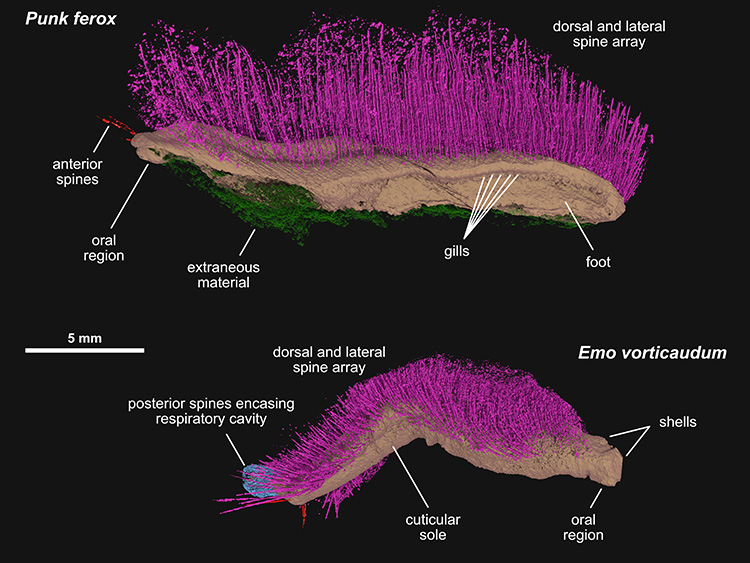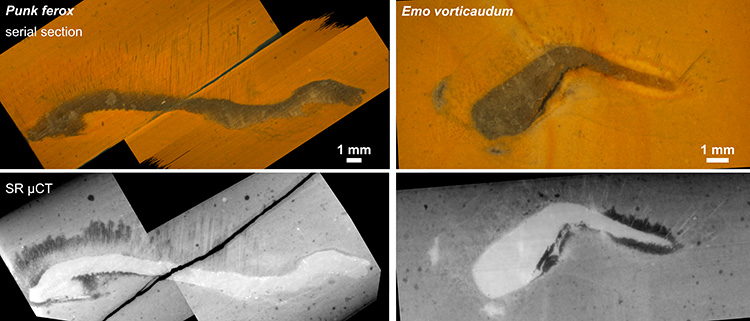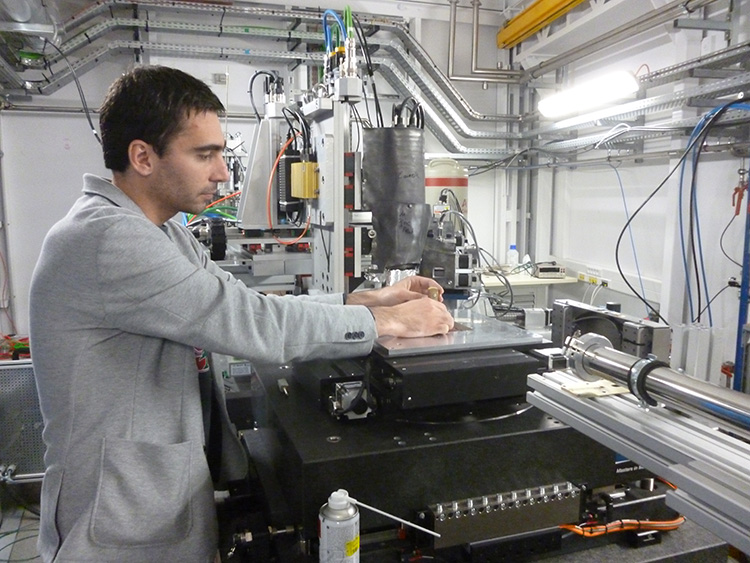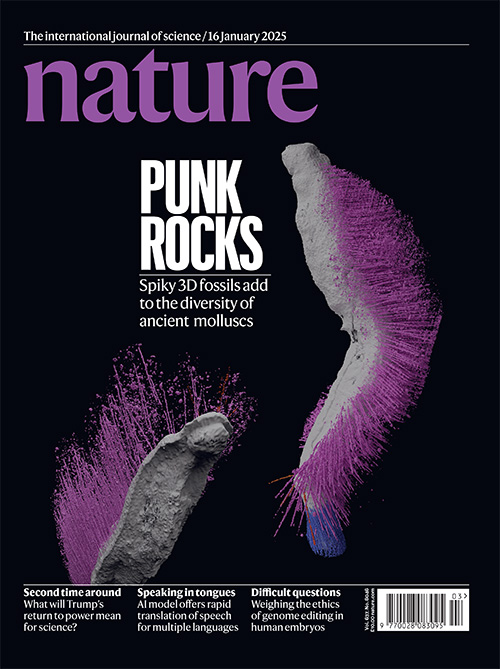A team led by palaeontologists at Imperial College London, in collaboration with scientists from IPANEMA Institute and PSICHÉ beamline, revealed the 3D anatomy of ~430-million-year-old marine fossils, using sensitive phase contrast X-ray tomography at PSICHE. They identified two new species of spiky worm-like organisms that document previously unknown morphological and ecological diversity in Aculifera, one of the two fundamental branches of the molluscan tree of life. Their discovery was published on January 8, 2025, in the journal Nature.
The phylum Mollusca (e.g., snails, slugs, mussels, squid, octopuses, and chitons) is one of the most diverse groups of animals on Earth, yet many unknowns remain regarding their evolution. This is because molluscs living today represent only a fraction of the vast diversity that once existed, and that aside from their shells, fully preserved fossils of these highly decay-prone organisms are extremely rare. One of the most elusive aspects lies in the history of the Aculifera, one of the two primary branches of the molluscan tree of life. Living aculiferans include the polyplacophorans (commonly known as chitons or coat-of-mail shells), which resemble eight-shelled limpets, and the relatively obscure aplacophorans—bizarre, shell-less molluscan worms. The prevailing view is that the morphology of aculiferans has remained largely unchanged over time—a pattern that stands in contrast to the considerable variability observed in other molluscs.
One of the few sites that has yielded fully preserved fossils of early aculiferans is the Herefordshire Lagerstätte*, a fossil deposit from the Silurian period (approximately 430 million years ago). This features diverse marine fauna in extraordinary detail. Fossils have maintained their three-dimensional shape with many soft tissues remains. Up until now, they have been studied digitally as ‘virtual fossils’ using a destructive serial-grinding technique. The fossil is revealed by progressively grinding away the rock (and the fossil), while recording images layer by layer. Thus, the 3D shape is revealed, but the fossil is destroyed in the process. The team had already found two of the most complete fossil aculiferans known in the deposit in this way. They used SOLEIL to search for more examples, using X-ray tomography at the PSICHÉ beamline. This technique, like a medical scanner, performs non-destructive imaging, and was used to study previously unexamined Herefordshire fossils without damaging them.
To the team's delight, two new species were found (figures 1 & 2).

Figure 1: 3D rendering of the new aculiferan fossils Punk ferox and Emo vorticaudum.
© Quentin Gueriau.
Their anatomy was thoroughly studied and described. Both are generally worm-like, with numerous spines that extend upward and outward, and a smooth, spine-free underside used for movement. However, aside from these similarities, they differ significantly—not only from the two previously discovered species but also from each other. One is named Punk ferox for its distinctive spiky ‘hairstyle’. The other is called Emo vorticaudum and has two stud-like shells on its upper surface, shorter spines that form a fringe-like pattern, and a tail encircled by spirally twisted spines. These combinations of traits are entirely unique. For example, the rear end of Emo closely resembles that of some modern aplacophorans, though its shells and sole morphology fall outside the typical characteristics of that group. Punk, on the other hand, shares some features with modern polyplacophorans, yet completely lacks shells. Moreover, Emo is preserved in a posture suggesting it may have moved by ‘inching’—a mode of locomotion resembling caterpillar movement, which has never been observed in any other mollusc.

Figure 2: Serial (top) and synchrotron radiation X-ray microtomography (SR µCT, bottom) sections through the new aculiferan fossils Punk ferox and Emo vorticaudum.
The discovery of Punk and Emo reveals that early aculiferans were no more conservative in their morphology and ecology than any other molluscan group, with living species representing only a small fraction of a once-diverse group with a complex evolutionary history.

Figure 3: Pierre Gueriau positioning one of the ~430-million-year-old marine Herefordshire fossil for X-ray microtomography at the PSICHE beamline.

These results made the cover of the January 16, 2025 issue of Nature.
* Lagerstätte: sedimentary deposit containing a wide variety of fossils, or fossils with exceptional preservation.
